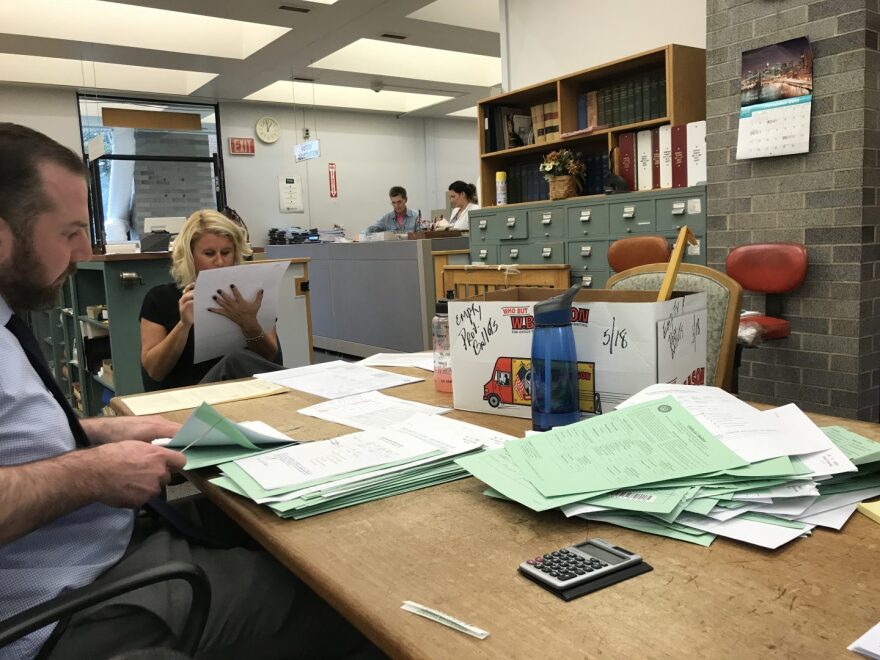When there’s a mistake or a misunderstanding at the polls, voters are sometimes asked to cast a provisional ballot.
Being at the wrong precinct, having an outstanding mail ballot, a misspelled name in the voter rolls, and other rare but real confusion at a polling place can result in a voter being asked to cast a provisional ballot.
Provisional ballots are a backstop to ensure people have an opportunity to vote and not, as some people mistakenly believe, a form of punishment.
Gregory Monskie, York’s County’s chief operations officer, says voters will have to take a little extra time to fill out paperwork and get elections officials’ signatures on the return envelope.
“A judge of elections should be able to shepherd a voter through that. But we have seen provisional ballots come back that did not have the correct signatures on it, so making sure that everything is completed on the outside of the provisional ballot would be critical,” Monskie said.
Lebanon County’s Election Director Sean Drasher says most provisional ballots are counted, at least for statewide or regional races.
Once the provisional ballot and return envelope is complete, elections officials will keep it separate from standard ballots. Elections officials then look into the details around provisional ballots and vote on each one separately to see if some or all of the votes will count.
In cases where a voter casts a provisional ballot in the wrong precinct, for example, the state or countywide races may be counted, but local races likely would not.
Voters can check the status of their provisional ballots on the Department of State’s website.
Go to the correct precinct
For one of the more common reasons voters are asked to cast provisional ballots – they show up at the wrong polling place – Drasher recommends voters go to the correct precinct.
“If you’re arriving at the wrong office to vote, rather than just doing the provisional ballot and only end up having one race or a couple of races out of that whole ballot count for you, the much better thing to do is to go to your correct voting location, because then you’ll get a valid ballot that has all the relevant races,” Drasher said.
If it’s the end of the day and the voter doesn’t have the time to change precincts, Drasher said it’s better to vote provisional than not vote at all.
To avoid this problem, voters can check their polling place on the Department of State website.
Provisional ballots and mail-in or absentee voters
Voters who request mail-in or absentee ballots, but then try to vote in-person will also be required to vote provisionally, with a couple exceptions.
Counties begin to process mail-in votes at 7 a.m. on the day of the election. As elections officials find ballots that are not properly signed and dated, or are not in the secrecy sleeve, they notify voters those ballots will not be counted.
Because counties, and not the state, administer elections in Pennsylvania, they sometimes differ in their methods and timing for notifying voters regarding mail-in ballot status. Still, all voters can track the status of their mail-in and absentee ballots on the Department of State’s website.
Voters who have had their mail-in or provisional ballots rejected can go vote in-person at their polling place and cast a regular ballot.
Voters who have requested a mail-in or absentee ballot but change their minds can bring those ballots into the voting site and surrender them before casting a regular ballot.
Otherwise, those who have requested a mail-in or absentee ballot and try to vote in-person will have to vote provisionally. This is so that people are not able to vote twice.






